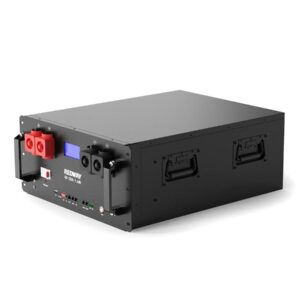
How to Charge and Maintain Lithium Batteries Effectively
Charging and maintaining lithium batteries, including 48V lithium-ion batteries and 16S configurations, is crucial for maximizing their lifespan and performance. By following best practices and understanding specific charging methods, users can ensure their batteries operate efficiently and safely.
What are the best practices for charging a 48V lithium-ion battery?

To charge a 48V lithium-ion battery effectively, always use a charger designed specifically for that voltage. Monitor the charging process to avoid overcharging, which can damage the battery. It’s recommended to charge in moderate temperatures, ideally between 32°F to 113°F, to prevent overheating or freezing.Charging Practices Chart
| Practice | Description |
|---|---|
| Use Compatible Charger | Ensure it matches the battery’s voltage |
| Monitor Charging | Regularly check voltage and temperature |
| Avoid Overcharging | Disconnect once fully charged |
How does a 16S lithium battery charger function?
A 16S lithium battery charger is designed to charge a series configuration of 16 cells, typically providing an output voltage of around 67.2V when fully charged. These chargers utilize constant current/constant voltage (CC/CV) methods, ensuring safe and efficient charging by gradually reducing current as the battery approaches full capacity.16S Charger Functionality Chart
| Feature | Description |
|---|---|
| Output Voltage | Typically 67.2V for full charge |
| Charging Method | CC/CV (Constant Current/Constant Voltage) |
| Maximum Current | Varies by model; often between 5A to 20A |
What considerations should you make when using a 3.7V 16S lithium battery charger?
When using a 3.7V 16S lithium battery charger, ensure that it is compatible with the specific chemistry of your cells, such as Li-Ion or LiPo. Verify that the charger provides adequate voltage and current settings according to manufacturer specifications to avoid damaging the cells during charging.Charger Considerations Chart
| Consideration | Description |
|---|---|
| Chemistry Compatibility | Ensure it matches cell type (Li-Ion/LiPo) |
| Voltage Settings | Must align with total pack voltage |
| Current Rating | Should match or be lower than recommended limits |
Should you choose lead-acid or lithium batteries for a classic motorcycle?
Choosing between lead-acid and lithium batteries for classic motorcycles depends on several factors. Lithium batteries offer lighter weight, longer lifespan, and better performance in cold conditions, while lead-acid batteries are generally cheaper upfront but heavier and less efficient over time.Battery Comparison Chart
| Feature | Lead-Acid Battery | Lithium Battery |
|---|---|---|
| Weight | Heavier | Lighter |
| Lifespan | Shorter (3-5 years) | Longer (up to 10 years) |
| Cost | Generally cheaper upfront | Higher initial cost but better long-term value |
What are the best practices for charging a lithium-ion solar battery?
Best practices for charging a lithium-ion solar battery include using a compatible solar charge controller, ensuring proper installation of solar panels for optimal sunlight exposure, and monitoring temperature during charging. It’s advisable to avoid deep discharges and maintain charge levels between 20% to 80% for optimal health.Solar Battery Charging Practices Chart
| Practice | Description |
|---|---|
| Use Solar Charge Controller | Regulates charging from solar panels |
| Monitor Temperature | Avoid extreme heat or cold during charging |
| Maintain Charge Levels | Keep between 20% to 80% |
Where can you find reliable information on lithium battery charging and maintenance?
Reliable information on lithium battery charging and maintenance can be found on manufacturer websites, educational platforms like Battery University, and specialized forums focused on energy storage technologies. Additionally, product manuals often provide essential guidelines tailored to specific models.
Expert Views
Understanding how to charge and maintain specialized lithium batteries is crucial,” states Dr. Emily Carter, an expert in energy storage solutions. “Following best practices not only enhances performance but also significantly extends the lifespan of these valuable energy sources.”
FAQ Section
Q: Can I use any charger for my lithium battery?
A: No, always use a charger specifically designed for your battery’s voltage and chemistry to avoid damage.Q: How often should I charge my lithium batteries?
A: Charge your batteries regularly, ideally before they drop below 20%, to maintain optimal performance.Q: Are there safety concerns with charging lithium batteries?
A: Yes, it’s essential to monitor temperature and avoid overcharging; using quality chargers helps mitigate risks.
